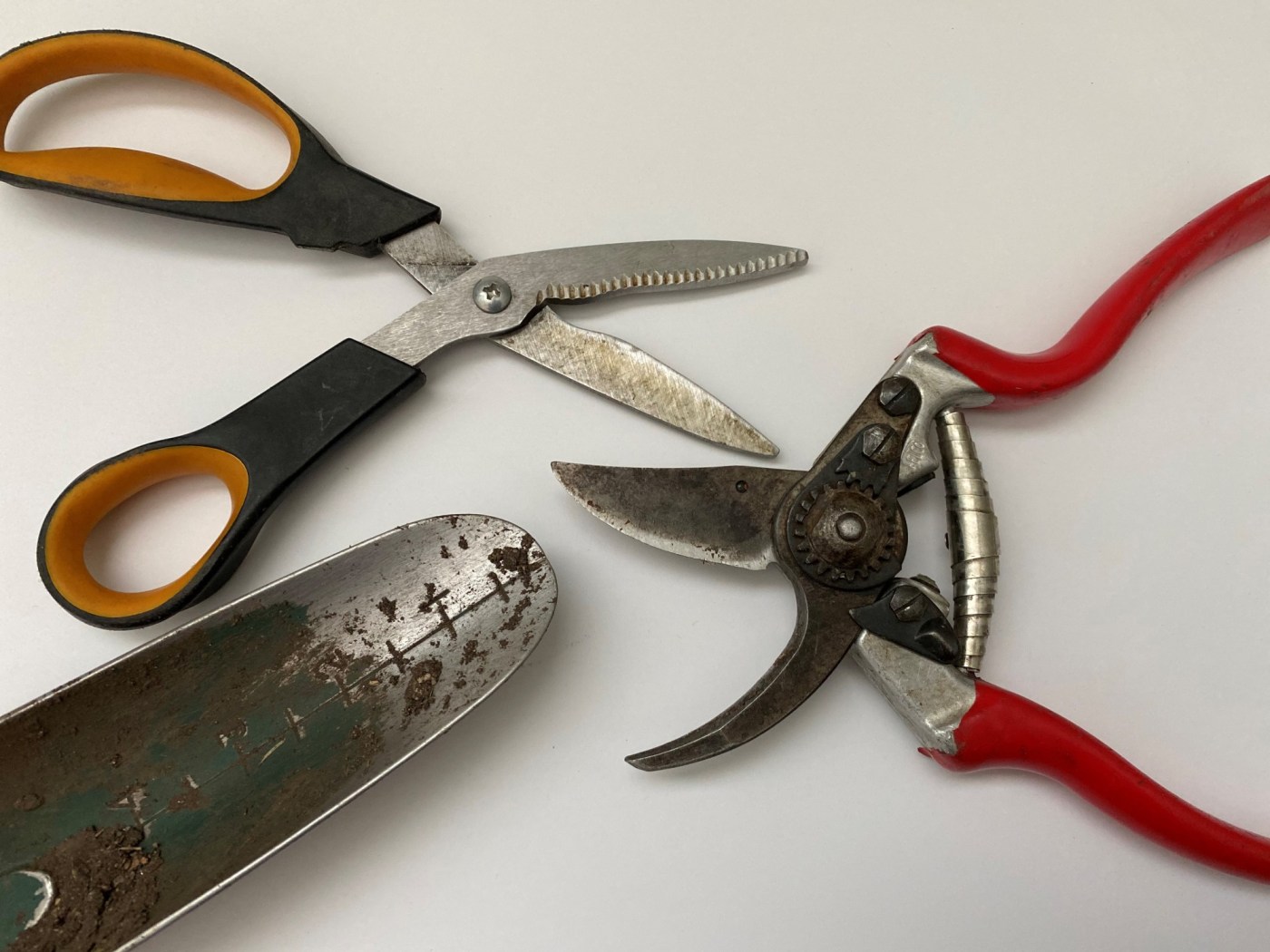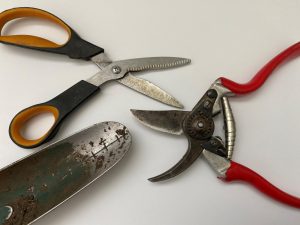
How to get your tools prepped for spring planting
“If the only tool you have is a hammer, it’s hard to eat spaghetti,” says David Allen, a productivity consultant and writer. Could this analogy apply to using the right garden tool to effectively complete outdoor tasks?
No doubt, and taking it further: It is time to get tools in their best working condition for the new season.
Take a good hard look at your garden tool kit and then make some decisions. Are your bypass pruners making sharp cuts or are they doing harm by crushing the branch? If your trowel handle bends like a paper drinking straw when digging, then a new, hardworking one will change your garden life for the better. Maybe your tools just need a bit of spit and polish and a good sharpening session. And after your decisions are made, how about spaghetti for dinner?
Clean and disinfect
The list of gardening tools to clean each season includes shovels, rakes, pitchforks, plant trellises, cages, stakes, accessories and containers. (Betty Cahill, Special to The Denver Post)
Improve tool performance with a good cleaning. Just like washing our hands to remove germs and bacteria, we need to do the same for our garden tools. No need to spread any harmful pathogens from last year to established plants in the garden and new ones that will be planted soon. And when referring to tools, the list includes plant trellises, cages, stakes, accessories and containers (they’ll need cleaning and disinfecting, too). Some trellises and containers may not be easy to clean because of location and size, so do the best you can. Generally, wooden containers naturally repel fungi and bacteria. Where possible, wash with soap and water, rinse well and let dry.
Clean each tool well before disinfecting. Begin by giving each a strong blast of water to remove caked-on dirt and debris. Pruners can easily be dissembled by removing the nut or screws that hold the blades together, then the spring coil will slip off. (Keep track of the pieces.) Soaking in warm, liquid dish soap is all you need; use a stiff brush for hard-to-reach places. If there’s dried-on residue or sap, soak longer in soapy water or try a commercial product like Scrubbing Bubbles, which also disinfects. Read and follow label cautions associated with commercial products. Rinse well with water after cleaning and dry.
Lysol — or similar, store-brand versions — works well as a disinfectant for possible fungi, bacteria and viruses on tools. Simply place the tool in a bucket or box and spray all sides, or opt for the easy-to-use wipes. When finished, let the tools air dry.
Avoid using bleach products to disinfect pruners and other sharp-edged cutting tools. Bleach is very corrosive and can make pits in some metal tools. However, diluted bleach (one part bleach, nine parts water) can be used on rakes, shovels, spades, trellises, tomato cages and containers.
Undiluted 70% or higher concentration rubbing alcohol works well on small hand tools and pruners, although when used on tools to prune out fire blight, it might not be as effective.
All clean: Soaking garden tools in warm, liquid dish soap is typically all you need; use a stiff brush for hard-to-reach places. (Betty Cahill, Special to The Denver Post)
Rust can be removed a couple of ways: Soak exceptionally rusty tools in a jar or can of white vinegar for several hours or overnight. For shovels, soak a large rag with vinegar, wrap it around the shovel blade, cover with plastic and let it sit overnight. Use a wire brush after soaking to remove any residual rust. After soaking any tool, wash with soapy water, rinse and dry.
Also try using some elbow grease with sandpaper or steel wool for rust.
Sharpening
Want superior experiences preparing a meal and maintaining a garden? Assuming your answer is yes, both disciplines require sharp tools.
The easiest way to sharpen is to take your clean and sanitized tools to a reputable garden center, hardware store, small business or friend who specializes in sharpening gardening tools. Prices should be reasonable.
For DIY, a carbide file is great for smaller tools like pruners, loppers and small snipper shears. A mill file works well on shovel blades.
Once all your tools are cleaned, disinfected, and sharpened, give them a wipe down with some vegetable oil, which will help prevent rust through the season. Bypass pruners will benefit from a drop or two of hardware lubricant (like 3-In-One oil).
Tool tips
During the outdoor gardening season, some smart gardeners brightly paint the handle of their trowels, making them easier to spot in the garden.
A pocketed apron is handy for holding and carrying tools around while gardening. Plastic tubs decked out with a saddle bag to hold all sorts of tools (and perhaps an adult beverage for later in the day) are also popular.
Take advantage of these warm late winter days into spring and do the work outside while soaking up some healthy vitamin D. Clean tools, sharpened pruners? Life is good.
Resources
How to Clean and Sharpen Tools: bit.ly/3VaXQkh
Laura, The Garden Answer: bit.ly/3VbK0OO
Betty and Alan Rollinger, Keeping Garden Tools Cleaned and Cared For: bit.ly/4a7db9F
Betty Cahill is a freelance writer who speaks and writes about gardening in the Rocky Mountain Region. Visit her site at http://gardenpunchlist.blogspot.com/ for even more gardening tips.


